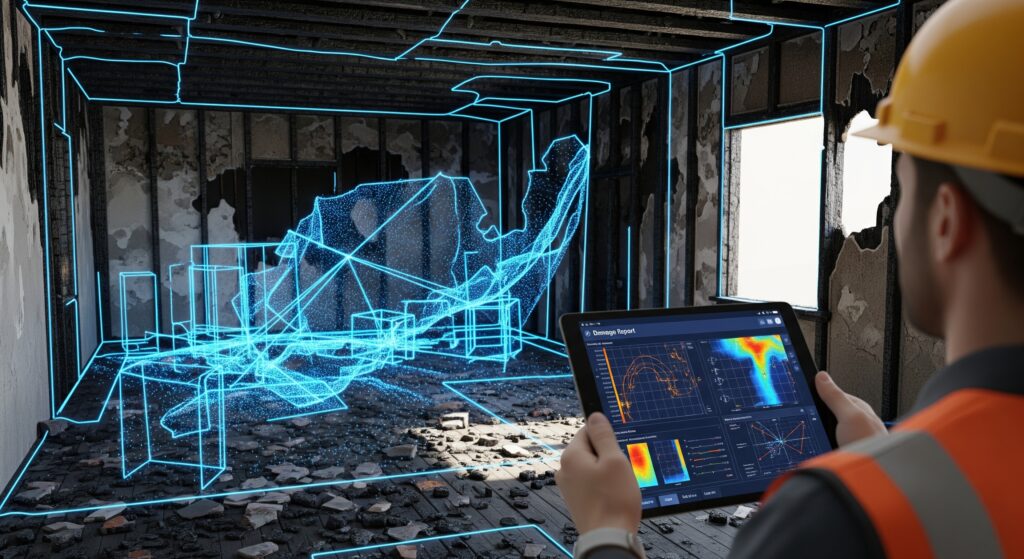Using 3D Scans for Xactimate files
When a disaster strikes, the immediate aftermath is a race against time. From natural catastrophes like hurricanes and earthquakes to man-made incidents, the key to a swift and effective recovery lies in accurate and rapid damage assessment. In the past, this process relied on manual measurements, photographs, and written notes, often leading to delays, inaccuracies, and disputes.
Today, a new technology is revolutionizing this critical phase of disaster recovery: 3D scanning. By creating a detailed “digital twin” of a disaster site, 3D scanning provides a level of precision, speed, and safety that was previously unimaginable.

What is 3D Scanning and How Does It Work?
3D laser scanning uses laser pulses to measure distances and create a comprehensive 3D model, or “point cloud,” of an environment. This technology captures millions of data points in a matter of hours, replicating the intricate details of a structure and its surroundings with millimeter-level accuracy. The resulting data can then be used to create 2D floor plans, 3D models, and even virtual walkthroughs of the damaged property.
The Three Key Benefits of 3D Scanning in Disaster Recovery
1. Faster and More Accurate Damage Assessment
Traditional methods for assessing damage are slow and labor-intensive. 3D scanning dramatically reduces this timeline, allowing recovery teams to map large areas in hours instead of weeks. This speed is crucial for getting restoration efforts underway sooner and minimizing downtime. The high-precision data ensures that every detail, from structural damage to hard-to-reach areas, is captured, reducing the risk of human error and overlooked issues.
2. Streamlining the Insurance Claims Process
One of the most stressful aspects of a disaster is dealing with insurance claims. 3D scans provide an objective, irrefutable record of the damage. This digital evidence helps to:
- Reduce disputes: The detailed, timestamped data eliminates subjective interpretations of damage.
- Expedite settlements: Insurers can virtually “walk through” the damaged property, assessing the full extent of the loss without the need for multiple on-site visits. This leads to faster approvals and quicker payouts.
- Reduce fraudulent claims: The verifiable record makes it more difficult to submit false claims, building trust and transparency.
3. Enhancing Safety and Planning
Disaster sites are often unstable and dangerous. 3D scanning is a non-contact technology, allowing teams to assess damage from a safe distance, protecting personnel from harm. The data is also invaluable for planning the reconstruction process. Architects, engineers, and restoration professionals can use the 3D models to create detailed repair plans, calculate precise material needs, and monitor progress, all from the safety of their offices.
A New Era of Resilience
From documenting a collapsed building to assessing a flood-damaged home, 3D scanning is proving to be an indispensable tool for a wide range of disaster scenarios. By transforming the chaos of a disaster into a structured, data-rich environment, this technology is not just accelerating recovery—it’s building a more resilient future. The move from manual, time-consuming assessments to data-driven, rapid responses is a monumental step forward, proving that with the right tools, even in the face of disaster, recovery can be swift and precise.
